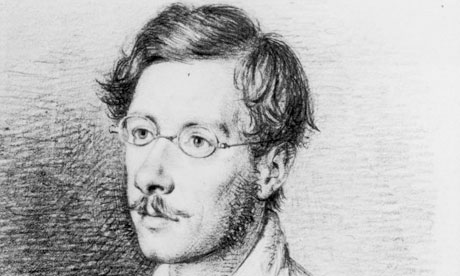
Edward Lear, one of the foremost writers of nonsense rhyme that England has produced, was born 200 years ago this week, on 12 May 1812.
Lear published many popular collections of poetry and limericks during his lifetime. The Owl and the Pussycat, first published in 1867, is one of Lear's most enduring works. In 1921, a Manchester Guardian leader used the poem to parody the Duke of Northumberland and the Morning Post, who were lobbying for the Duke to lead a 'new Conservative party, pledged to the destruction of Ireland, Jews, trade unions, Bolshevism, and all other nightmares of a degenerate age'.
Lear died in January 1888, and later that year a new edition of his work, Nonsense Songs and Stories, was published. The Guardian's reviewer had nothing but praise, calling the collection 'a capital specimen of his genius'.
Though the Guardian and Observer wrote little about Lear during his lifetime, various features have profiled him since. This 1968 profile from the Observer, ostensibly a review of two biographies, describes Lear as 'an utterly harmless man - irritable, quirky, hypochondriac, fussy, yet full of a certain sweetness'.
Lear achieved lasting fame for his rhymes and poems but he was also an accomplished watercolour artist and travel writer. In September 1852 one of his paintings - a Greek landscape - was included in an exhibition of modern artists at the Royal Manchester Institution. Gabriel Tisto, reviewing the collection in the Manchester Guardian, was less than impressed.
Queen Victoria, however, thought otherwise; in the 1840s she had engaged Lear to give her drawing lessons.
In 1912, the Observer enthusiastically reviewed a small exhibition of his drawings, but it wasn't until 1985, when the Royal Academy held a dedicated exhibition of Lear's artwork, that Lear was finally afforded the status of accomplished artist that had eluded him during his lifetime.
And in 1988, one hundred years after his death, Lear took his rightful place in Poets' Corner at Westminster Abbey. Lear achieved much, but it is as one of the finest writers of nonsense that he will be remembered affectionately by generations of children, past and to come.

